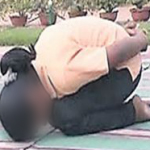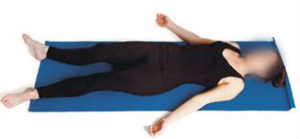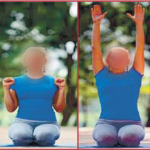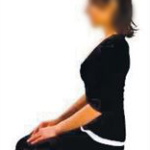SINUS
The human skull contains four major pairs of hollow air-filled cavities, called the Paranasal Sinuses which are connected to the space between the nostrils and the nasal passage (behind your nose). Sinuses help humidify the air we breathe in, as well as lighten the skull and enhance our voices, but their main function is to produce a mucus that moisturizes the inside of the nose. This mucus layer protects the nose from pollutants, micro-organisms, dust and dirt; while the tiny hair cells called cilia help to trap and propel bacteria and pollutants outward. The sinuses contain defenses against viruses and bacteria (germs).

- Maxillary sinuses
- Frontal sinuses
- Ethmoid sinuses
- Sphenoid sinuses

Asthma
It’s a chronic (long-term) lung Issuesinvolving the airways in the lungs. These airways, or bronchial tubes, allow air to come in and out of the lungs. Asthma is a Issuesthat inflames and narrows the airways. The inflammation makes the airways swollen and very sensitive. As the swelling worsens, airways will become narrower. Cells in the airways might make more mucus (sticky, thick liquid) than usual and that can further narrow the airways.

COMPLEMENTORY THERAPY
- Sinus detox
- Yoga therapy – chair Breathing and Pranayama
Sinus Detox
Facial stimulation: You may use for e.g. Vaseline Intensive Care or Himalaya Herbal cream; Inhaler for steaming
- Apply on face a small amount of Cream on a clean face and stimulate in upward circular motion, concentrating on sinus points for about 5 minutes (see pictures below)


- Cover head with towel and steam face using an inhaler with 3 drops essence oil (Essence oil is Optional) for 5 minutes
- While steaming, inhale through the nose and exhale through the mouth; inhale through the mouth and exhale out through the nose. Keep the eyes closed
- Repeat the above process for another one more round
- For the 3rd round of stimulation, use Kumkumadi cream instead of the above mentioned cream After stimulation, insert 3 drops of Anu Tailam (or Ksheerabala as per Doc prescription) into each nostril. Rest for 5 minutes before steaming** (when using Ksheerabala – use cotton stick and apply into nose)
- Wash face, gargle with warm salt water (5 minutes) to get rid of bacteria
- Followed by Jala Neti. Then close ears with thumbs and sneeze out all the mucus and excess water from nose
- 3 drops of sinus essential musk herb into each nostril and rest for 5 minutes** (can apply twice for more serious case)

COMPLEMENTORY THERAPY
Purpose & Benefits:
- Maintain steady awareness of breathing
- Voluntary control over involuntary nervous system
- With this technique, patient can learn to relax Bronchospasm effectively
- Panic reduced & relax the body
Phase 1
instant Relaxation technique (iRt) – With chair Support for 1 min

- Sit on the floor with a chair placed in front.
- Rest your arms and chest on the chair.
- Keep the face relaxed with a smile all through the practice.
- Start tightening from the toes.
- Tighten the ankle joints, calf muscles, pull up the kneecaps.
- Tighten the thigh muscles, compress and squeeze the buttocks.
- Exhale and suck in the abdomen.
- Tighten your fists, tighten your arms.
- Inhale and expand your chest.
- Tighten your shoulders, neck muscles and compress the face.
- Tighten the whole body from toes to the head; Tighten; tighten; tighten.
- Release and collapse the whole body.
- Legs and arms apart with the open palms facing the ceiling and enjoy the instant relaxation.
Phase 2
Chair Breathing With chair Support
- Remain seated on the floor with a chair placed in front; rest your arms and chest on to the chair with both leg stretches front and shoulders relaxed.

a. Moving head up and down
b. Moving head up and down with breathing
c. Moving head up and down with A-Kara chanting
Phase 3
neck Movement Without chair Support (5 times each)
- Sit in Vajrasana, placing palms on the thighs.
a. Moving head up and down
b. Moving head up and down with breathing
c. Moving head up and down with U-Kara chanting

Phase 4
Sasankasana – Rabbit Pose (5 times each)
- Sit in Vajrasana and bring hands behind your back. Make a fist with right hand and use the left hand to catch fist.
a. Bend backward and forward
b. Bend backward and forward with breathing
c. Bend backward and forward with M-Kara chanting
Phase 5
tadasana – Mountain pose (stay in this pose for 1 minute)
Stand upright, legs slightly apart. Relax from toes to head while standing in tadasana

Phase 6
neck Movement in tadasana (5 times each)
a. Moving head up and down
b. Moving head up and down with breathing
c. Moving head up and down with M-Kara chanting

Phase 7
Ardha chakrasana (Half Wheel) to Padahastana (Hand to Foot Forward Bend)
- Gradual movement from back to front, breath centered.
a. Bend backward and forward
b. Bend backward and forward with breathing
c. Bend backward and forward with M-Kara chanting

Phase 8
Quick Relaxation technique (QRT)
Lie down in Savasana (Corpse Pose)
Pranayama
Breath is Life and breathing is the first thing and last thing we do in our lives. Breathing is the most important daily life function we perform that help regulates the heartbeat as well as a natural way to increase the energy level. Proper breathing is the essence of life as it helps not only to improve your energy but also mental clarity, emotional resilience and productivity.
Kapalabhati (Frontal Brain cleansing Exercise)
Kapalabhati consist of two words: Kapala refers to skull while Bhati means to shine. It’s a form of deep breathing that has innumerable soothing benefits for the body, mind and soul, such as:
- Helps to oxygenate the body while strengthening the muscles of the stomach and abdomen
- Rejuvenates tired cells, circulation, slows the ageing process, helps relax facial muscles and nerves, increase immunity power
- Relieve sinus problems and help clear respiratory blockages
- It increases the lungs capacity, thus useful for respiratory related problems, and help treating cold and cough
- Improves digestion, the function of kidneys and liver; cure constipation, acidity and intestinal problems
- Calm down the mind, treat stress and anxiety, cures insomnia and enhance memory
Steps of Kapalabhati
- Sit comfortably on the mat. Spine erect, palms on knees, eyes closed and shoulders relaxed.
- Now inhale deeply through your both nostrils until your lungs are full with air.
- Then exhale through both nostrils forcefully, so your stomach will go deep inside. As you exhale feel some pressure in your stomach. While the process of exhaling there is a hissing sound, at this point try to think that your Issuess are coming out of your nose.
- Repeat this process for 10 minutes.

Precautions
- Patient with acid or heat related gastric problems, such as ulcers should use caution.
- Not to be practiced by those who are suffering from high blood pressure, heart disease, stroke, epilepsy, giddiness, vertigo and hernia.
Bastrika (Bellow Breathing)
Bhastrika Pranayama, also called bellow-breathing is a powerful and energetic Pranayama in yoga breathing exercises. In Ancient yogis they called it “the yoga breath of fire”. In Bhastrika, inhalation and exhalation are both forcefuly. Bhastrika is all about inhaling and exhaling completely so that our body gets sufficient amount of oxygen. Unlike in Kapalbhati where inhalation is passive and natural. The benefits of this practice includes:
- Strengthening the lungs, heats up our body and helpful in common cold.
- Helps in allergies, Asthma, repiratory diseases, tonsil and thyroid.
- Improves blood circulation, immune system, purifies blood and kicked out foreign invaders and toxins from body; provide relaxation to body and mind.
- Heart and head get adequate quantity of fresh and pure air by which our health is improved.
- Relieve stress, depression and hypertension; cures obesity and arthritis.
Steps of Bhastrika (20 cycles)
- Sit in Vajrasana or any comfortable cross-leg sitting position
- With forceful inhalation through nostrils, simultaneously stretch both arms above the head with palm facing front, filled lungs with air while inhaling and expand the chest
- Make a fist and bring both hands beside waist while exhale forcefully.


Precautions
- People who are suffering from high blood pressure and acute heart problems should not try this breathing exercise
Subtle Point
- If condition persists incorporate strengthening Immune system and Kriya./li>
- Trapped mucus in sinus is an excellent breeding ground for bacteria, virus and fungus; thus patient is encourage to have at least 7 to 8 complementary Managements to clear the symptomst
Acknowledgement to:
- CYT / ATTC Students of Union Yoga Ayurveda Singapore
- Swami Vivekananda Yoga Prakashana Trust, Bangalore
Disclaimer
Yoga Ayurveda Therapy is Complementary Medicine and doesn't alternates any conventional treatment.
Yoga-Ayurveda Therapy needs physical assistance which may need physical touch. You can ask teacher or therapist not to give physical touch or assistance and based on whatever you choose, our teacher or therapist will follow the instructions. Any point you want to change the preference, then please inform teacher or therapist and management in writing. You will take responsibility of your decision and will not hold Union Yoga Ayurveda responsible for any kind of damage.
All kind of Yoga Ayurveda teaching and therapy can cause certain injuries and you are accepting those injuries. Signing up for the therapy or yoga courses means that you are aware of the probable injuries.
Union Yoga Ayurveda (Union Centre Pte Ltd) and its staff are not liable or responsible for any injuries caused during the session which are visible or not visible, physical or hormonal or mental. You as client take full responsibility of your own decision and will not claim any kind of compensation in terms of money or any resources for the damage caused because of due process.
Related Topics
- Yoga Therapy & Common Ailments
- Diabetes Mellitus
- Yoga & Glaucoma
- Chronic Myeloid Leukemia
- Gastro-Esophageal Reflux / Gastritis
- High Blood Pressure
- For Anxiety neurosis, Depressions etc
- For Neurological issues
- Cataract and short / long Sightedness
- Scoliosis / Herneated disc / Sciatica
- Menstrual Issues


